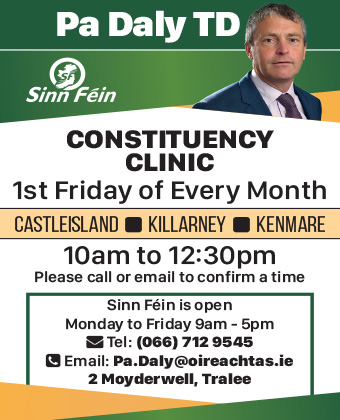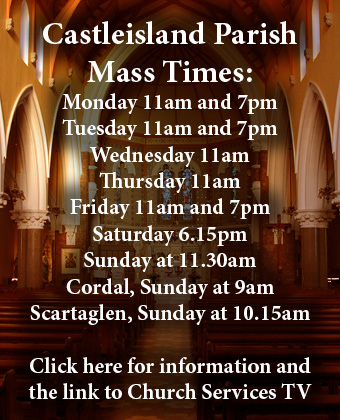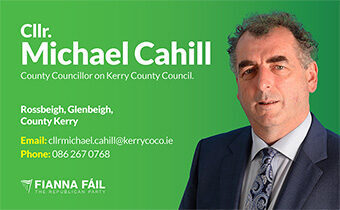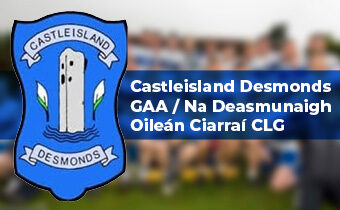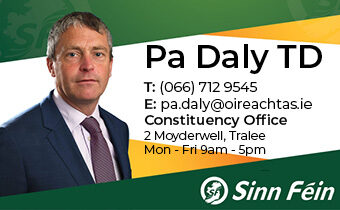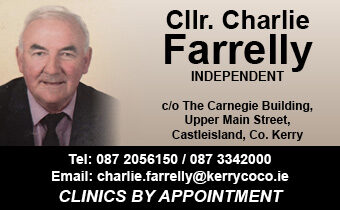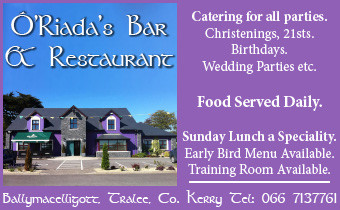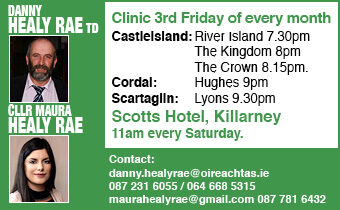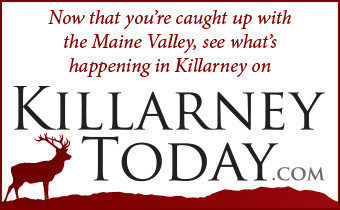



I want to thank the Kerry Archaeological and Historical Society for inviting me to speak here today.
The Society has done much valuable work to mark the centenary of the Civil War and the wider revolutionary period in Kerry and in Ireland, and that has been extremely valuable in encouraging and nurturing an inclusive and accessible debate and discussion about the turbulent events which led to, and followed, the foundation of the Irish Free State.
Oration by Author and Historian Owen O’Shea
As we approach the end of the Decade of Centenaries, I want to acknowledge the work of Jimmy Deenihan, who as minister, laid much of the foundations for what has been a very successful decade-long engagement with our history from a century ago.
Events Well Ventilated
I will keep my remarks brief and I don’t propose to delve in to too many of the details of what happened here at Knocknagoshel a century ago – the events here have been very well ventilated and recorded over the years, and indeed in recent weeks as we approach the centenary of 6 March.
But some details are worth remembering, if only, perhaps, to remind us of the brutality and
barbarity of the events here and in Kerry in 1923.
The viciousness of what befell those killed here a century ago is captured in one of the few first-hand accounts of the incident, which comes to us from Sgt Matthews, one of those who came here to Barrinarig Wood at 2am on 6 March. I quote his recollection as a powerful reminder of what occurred:
Captain Dunne left me in charge of the Crossley [Tender] and 2 Vols. [Volunteers] at Talbot Bridge and proceeded in the direction of Baranarig [sic] Wood with the rest of the party to search for a Dump supposed to be in or around the wood.
Heavy Mine Exploded
After about a quarter of an hour on the bridge something in the nature of a heavy mine exploded.
Immediately I ran in the direction to find out what happened and on arriving near the scene of the explosion I found Captain Dunne and Lieut. O’Connor dead. I then made a search of the place and found Vol. M. Galvin, Vol. O’Connor and Captain Stapleton almost dead. I asked Captain Stapleton if I could do anything for him and he told me to take the Crossley back to Castleisland and report the matter to H.Q. and also to get a priest, which I did; but on arrival of the priest, Vols Galvin and
O’Connor were dead. Captain Stapleton was alive and after receiving the last rites of the Catholic Church he expired. (End quote).
The Cork Examiner reported, and I quote, ‘Portions of their mangled bodies were found hundreds of yards away.’ The funerals which followed drew enormous crowds – in Dublin, the funerals of Captains Edward Stapleton and Michael Dunne were described by the Evening Herald as among the biggest witnessed since that of Michael Collins.
Kerry Staring into Abyss
Sadly, as we know, the deaths of five Free State army soldiers here in the early hours of 6 March 1923 set in train a series of dreadful atrocities which left Kerry staring into the abyss.
Pat Butler’s docudrama ‘Ballyseedy’ which was shown at the Kerry Civil War Conference last
weekend portrays so well the dreadful injuries sustained by those who died and the shocking consequences for people in the locality who went to the scene and suffered so much in the days and weeks that followed.
As we know, the reaction of the senior ranks of the army in Kerry, among them the much-loathed Paddy O’Daly, unleashed what Diarmaid Ferriter has called ‘a lust for revenge’ and which would leave 17 anti-Treaty IRA prisoners dead over the course of the following week.
But the suffering of the victims of Knocknagoshel did not end in 1923. We now know, thanks to the availability of records contained in the Military Archives, that the grief and anguish for the families of the victims of Knocknagoshel lasted for many, many years.
Land Going to Waste
The father of Paddy ‘Pats’ O’Connor, also Patrick, told the Department of Defence in his application for an allowance in later years, that young Patrick had ‘assisted him in every way. He was the only son who lived on and helped to manage [the] farm,’ he wrote, After his death, the land was ‘almost going to waste as they have nobody on it owing to the high cost of labour’.
Patrick O’Connor sought compensation of £2,000 but received only a dependant’s gratuity of £150 under the Army Pensions Act of 1923.
Patrick O’Connor Senior left his home and moved to Birmingham shortly after the war ended.
In a sign of further deep cleavages after the Civil War, on 17 October 1925, the grave of Paddy ‘Pats’ O’Connor was defaced and damaged by ‘at least 50 marks’ and nine wreaths were ‘broken to pieces’. The Celtic cross standing on his grave had been placed in the new cemetery in Castleisland the previous July by his family at a cost of £120.
Son Politically Naïve
John O’Connor, father of Laurence O’Connor of Causeway, who also died here, believed his deceased son was politically naïve and (quote) ‘did not understand the difference’ over the
Treaty when he joined the Free State Army.
His mother, Margaret, received an initial gratuity of just £30, even though Laurence’s father was out of work and they had a large family of eight children – none of whom were in employment – to support. Neighbours came together to collect £11 ‘in charity’ for the family to help them to pay their bills.
For the family of Private Michael Galvin of New Lane, Killarney, the circumstances were no more favourable. Galvin had only been in the army for four months, during which time he had sent his father, Michael, ‘about £4’. Michael Galvin Senior, a tailor, had ‘no home of any description’ and ‘no income of any sort’; one of his sons was in Killarney Mental Hospital and two daughters were in the United States. He was, a local garda sergeant reported, ‘injured a good deal in his health and mind due to the loss of his son’. A gratuity of £50 was eventually paid.
Both Legs Amputated
While those who died are remembered today, so too must we remember the injured who suffered dreadfully in the years and decades after Knocknagoshel.
Thirty-two years after his legs were amputated as a result of the trap mine explosion which killed five of his fellow officers at Knocknagoshel, Private Joseph O’Brien was provided with a commode because he found it difficult to walk across his back yard to his outdoor toilet.
Such was the extent of his injuries that both of his legs were amputated four inches below the knee joint’ and he lost most of the sight in his eyes because of epiphora, a traumatic cataract and related sight loss. The first that his wife, Annie (Margaret), learned of his catastrophic injuries was a telegram dispatched from the Adjutant General at Portobello Barracks in Dublin shortly after the incident: ‘Regret to inform you that Vol. Joseph O’Brien No. 1596 lies badly wounded at the Infirmary, Tralee. Should you desire to visit him, a free voucher will be issued.’
His plight was raised in the Dáil by Alfie Byrne TD, who questioned the President of the Executive Council, W.T. Cosgrave, on the matter. O’Brien, Byrne told the Dáil, was sent home to his wife, who resides at 35 St. Mary’s Road, North Wall, where he is confined to bed and cannot see; that he is not in receipt of any allowance or pension; that his wife has three children to support, and if in view of this he will see that an immediate payment is made in order to enable her to provide food for her children and proper medical treatment for her husband.
Further Tragedy Endured
The family endured further tragedy when Joseph and Annie’s son, James, was killed in an accident at McKee Barracks, where he was serving with the army, in March 1955.
There is, I think it is fair to say, a remarkable pathos and sadness that emanates from these accounts that draws us very much into the personal pain and suffering of this period.
The deaths of Paddy ‘Pats’ O’Connor, Michael Galvin, Laurence O’Connor, Edward Stapleton and Michael Dunne serve to highlight the very large number of casualties on the Free State side in Kerry.
An estimated 86 soldiers in the Free State died in Kerry in 1922-23, many of whom were natives of Kerry.
Their stories and their memory have, I would suggest, been largely overshadowed by the actions and approach of their superiors in the army in Kerry, many of whom, as we know, were driven by a ruthlessness and a venom that made the war so divisive and bitter in this county.
But many of those who died on the Free State side of the conflict were ordinary young men, of and from this county, whose motivations and aspirations were no less valid than those of their counterparts on the other side of the political divide. In remembering the Civil War, the men of Kerry who lost their lives in the name of the Free State must not be forgotten.
Importance of Respect for Views
There has been much debate in recent weeks about how to meaningfully mark the centenary of the worst atrocities of the Civil War in Kerry and I have listened closely to that debate, respectfully and considerately. It is important to respect everyone’s views about how to acknowledge the trauma, the hurt and the pain which lasted for generations.
From my own point of view and from my experience of examining and researching this dreadful period in recent years, I would like to respectfully suggest that there is one very meaningful and practical ways in which we might, as a society and as a people, commemorate and mark the tragic events of a century ago.
One way is to invite and encourage a real engagement with the accounts of those from this period, which are now so readily available through the digitisation of records by the Military Archives and which are available on their website. In recent years, thanks to the work of the staff in the Military Services Pension Collection, we are now able to closely examine and read the very extensive and very evocative accounts of the men and women who were caught up in the turmoil of the Civil War.
Eloquence from the Pages of History
And it has allowed the current generation to look into the records of their relatives, many of whom never spoke about these events, but who are now speaking very loudly and very eloquently from the pages of their pension files.
Talking to those who lived through a particular period is a crucial aspect of historical research and historical understanding – there are now, of course, no living combatants of the Civil War – but we do have thousands of letters, pension applications, testimonies, interviews from those involved in the Civil War and those who survived them, which provide a hugely significant insight into the events of this period and the dreadful suffering that befell so many families in this county and beyond.
I believe that a very meaningful way in which the State could incorporate the teaching of the Civil War into the school curriculum – and I never stop hearing the refrain ‘we were never taught this in schools’ – is to get our teachers and young students to engage with these archive accounts and to engage with the real personal and human stories which they contain.
They are, in many cases, a very difficult read – one cannot be incredibly moved and saddened by the accounts of those caught up in these events. But these personal stories make our history more meaningful and more tangible.
Creative and Evocative Presentations
In a small but very significant way, this worked effectively in an outstanding exhibition at our conference last weekend, when a group of students from MTU Kerry and Kerry College took the accounts of about a dozen Kerry natives on both sides of the divide and interpreted and presented their stories in very creative and evocative ways. It shows the capacity for a younger generation to capture and reflect, not just on the tragedies of Kerry from 1922-23 but also the very real people caught up in and impacted by those tragedies.
I have visited my local primary school on two occasions to speak about the events of the War of Independence and will soon do so in respect of the Civil War. I found that young boys and girls were so engaged with the stories of the conflict in their locality involved people from their locality. Let’s now encourage our young people through the teaching of history in our schools, to embrace this material and this subject so that they might develop a better understanding of the Civil War and in turn become the researchers of the future, who might cast new lights on this tumultuous period in our collective history.
Finally, my only other observation is that the centenary of these events has been marked by a very inclusive, respectful, nuanced and informed debate and discussion which, I think, points to a maturity now in our engagements on the Civil War. That suggests that there is some healing now, 100 years on, and with the passage of time. Let us hope that this spirit of respectfulness and inclusiveness continues to inform our discussion on the Civil War and some of Kerry’s darkest days.
Go raibh mile maith agaibh.
 You can contact The Maine Valley Post on… Anyone in The Maine Valley Post catchment area who would like to send us news and captioned photographs for inclusion can send them to: jreidy@mainevalleypost.com Queries about advertising and any other matters regarding The Maine Valley Post can also be sent to that address or just ring: 087 23 59 467.
You can contact The Maine Valley Post on… Anyone in The Maine Valley Post catchment area who would like to send us news and captioned photographs for inclusion can send them to: jreidy@mainevalleypost.com Queries about advertising and any other matters regarding The Maine Valley Post can also be sent to that address or just ring: 087 23 59 467.








